Home>Interior Design>Front Yard Walkway Ideas: 15 Ways To Enhance Your Home
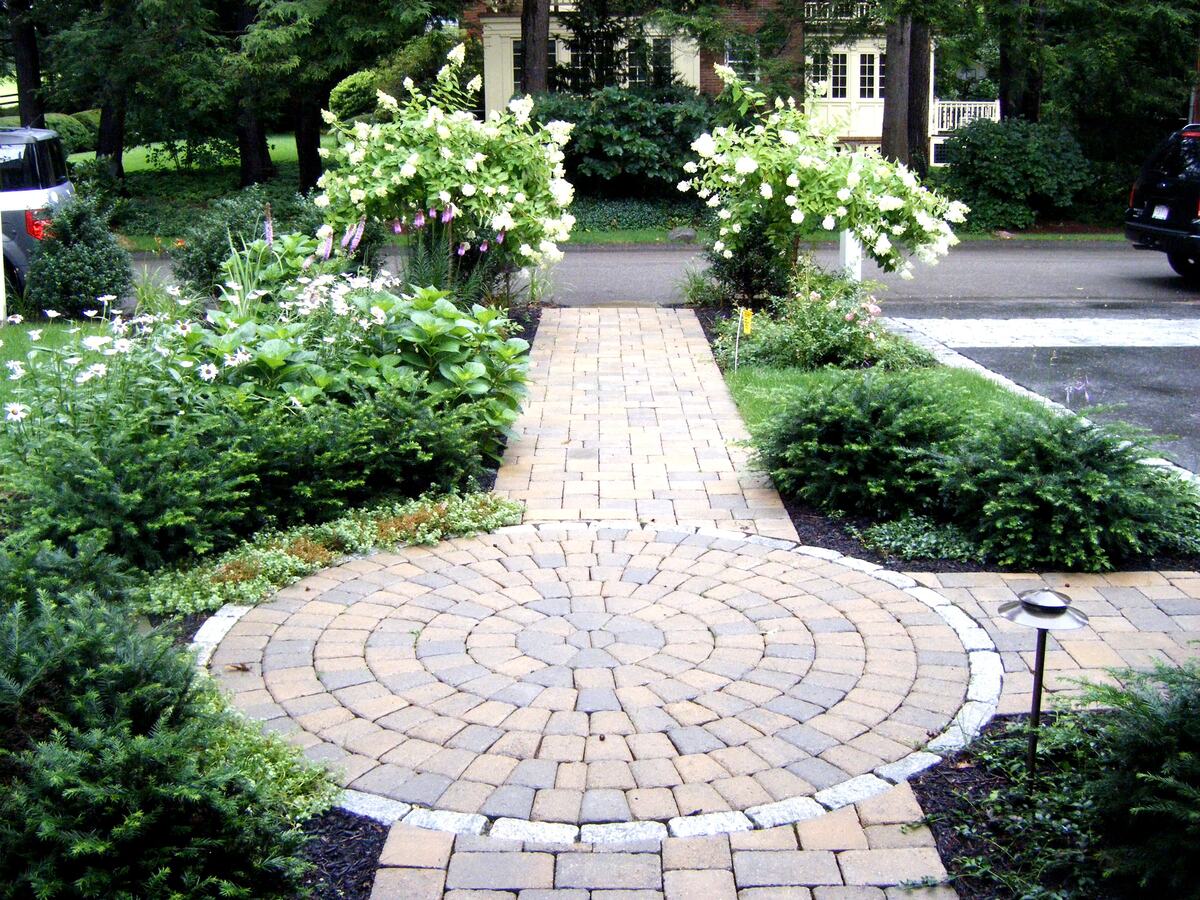

Interior Design
Front Yard Walkway Ideas: 15 Ways To Enhance Your Home
Modified: August 28, 2024
Discover creative and practical front yard walkway ideas to transform your home's exterior with this collection of 15 interior-design inspired solutions.
(Many of the links in this article redirect to a specific reviewed product. Your purchase of these products through affiliate links helps to generate commission for Storables.com, at no extra cost. Learn more)
Introduction
Welcome to the world of front yard walkways! Your front yard is the first impression your home makes on visitors, and having a well-designed walkway can greatly enhance its overall appeal. Not only does a walkway provide a functional pathway from the street to your door, but it also serves as an opportunity to showcase your personal style and creativity.
When it comes to designing a front yard walkway, the options are endless. From choosing the right materials to incorporating decorative elements, there are numerous ways to transform a simple path into a stunning focal point. Whether you prefer a traditional, contemporary, or eclectic style, there’s sure to be an idea that suits your taste.
In this article, we will explore 15 ways to enhance your home with front yard walkway ideas. From paving options and creative use of materials to incorporating lighting and greenery, we’ll cover it all. So, let’s dive in and discover how you can create a welcoming and visually appealing walkway that sets the tone for your entire property.
Key Takeaways:
- Elevate your home’s curb appeal with a front yard walkway that complements your architectural style. From traditional to modern, there are endless design possibilities to reflect your personal taste and create a visually captivating entrance.
- Transform a simple walkway into a stunning focal point by incorporating seating areas, water features, and decorative borders. Infuse your creativity and personality to create a memorable and inviting outdoor space.
Read more: 19 Pergola Ideas To Enhance Your Backyard
Paving options for front yard walkways
The choice of paving material for your front yard walkway is crucial as it sets the foundation for the overall design and aesthetics. There are various options available, each with its own unique characteristics and benefits. Here are a few popular paving options to consider:
- Concrete: Concrete is a versatile and cost-effective option for walkways. It can be poured into any shape or size, allowing for endless design possibilities. Concrete can also be stamped or stained to mimic the look of natural stone or brick, giving your walkway a more upscale appearance.
- Natural stone: Natural stone, such as flagstone or bluestone, adds a touch of elegance and timeless beauty to your front yard walkway. Each stone is unique, creating a charming and rustic look. Natural stone is durable and can withstand heavy foot traffic, making it a long-lasting option.
- Pavers: Pavers are pre-cast concrete blocks or bricks that come in various shapes, sizes, and colors. They are easy to install and can be arranged in different patterns, such as herringbone or basket weave, to create a visually interesting walkway. Pavers are also durable and require minimal maintenance.
- Gravel: Gravel is a budget-friendly option that provides a casual and relaxed look to your front yard walkway. It is easy to install and allows for excellent drainage. Gravel can be combined with other materials, such as stepping stones or decorative borders, to add texture and visual interest.
When selecting a paving option, consider factors such as the architectural style of your home, the surrounding landscape, and your personal preferences. Take into account the maintenance requirements, durability, and compatibility with your climate. Remember, the goal is to choose a material that not only complements your overall design but also provides a functional and durable pathway.
Creative use of materials for walkway design
When it comes to designing a front yard walkway, don’t limit yourself to traditional paving materials. Get creative and think outside the box by incorporating unique and unexpected materials. Here are some ideas to inspire your walkway design:
- Recycled materials: Give your walkway an eco-friendly twist by using recycled materials such as reclaimed wood, old bricks, or salvaged tiles. These materials not only add character and charm but also contribute to sustainable design practices.
- Stepping stones: Instead of a continuous paved surface, consider using stepping stones as a whimsical and visually interesting alternative. Stepping stones can be made from natural stone, concrete, or even decorative tiles. Arrange them in a pattern or irregularly spaced for a more natural look.
- Mosaic tiles: Add a pop of color and artistic flair to your walkway with mosaic tiles. Create intricate patterns or designs using colorful tiles and grout. Mosaic tiles can be used as an accent or to cover the entire walkway, making it a true work of art.
- Grass or turf: For a unique and visually striking look, consider incorporating grass or artificial turf into your walkway design. This technique, known as a “grasscrete” or “turfstone” pathway, allows grass or turf to grow within the gaps between concrete or paver slabs, creating a seamless and green effect.
- Stained concrete: Instead of opting for plain gray concrete, consider staining it to add color and texture. Concrete stains are available in a wide range of hues, allowing you to achieve a custom look that complements your home’s exterior. Stained concrete can mimic the appearance of natural stone or create a contemporary and bold statement.
By utilizing unique materials in your walkway design, you can create a visually stunning and one-of-a-kind pathway that reflects your personal style and enhances the overall aesthetic of your home. Don’t be afraid to experiment and mix different materials to achieve the desired look.
Adding lighting elements to enhance walkway aesthetics
Proper lighting is key to enhancing the safety and visual appeal of your front yard walkway. It not only guides visitors along the path but also creates a warm and inviting ambiance. Here are some lighting ideas to consider for your walkway:
- Solar-powered pathway lights: Solar-powered lights are a popular and eco-friendly option for illuminating walkways. They are easy to install and don’t require any wiring or electricity. These lights absorb sunlight during the day and automatically turn on at dusk, providing a soft and subtle glow along your walkway.
- Low-voltage LED lights: LED lights are energy-efficient and long-lasting, making them an excellent choice for walkway lighting. Low-voltage LED lights can be installed along the edges of the walkway or embedded in the ground to create a dramatic effect. They come in various colors and can be dimmable to create different moods.
- Step lights: Step lights are perfect for illuminating stairs or changes in elevation along your walkway. These lights are specifically designed to be recessed into the steps or installed on the risers, providing safety while adding a touch of elegance. Step lights come in various styles and finishes to complement your overall design.
- String lights: Create a magical and whimsical atmosphere by hanging string lights above or around your walkway. These lights can be suspended from pergolas, arbors, or even trees to provide a soft and enchanting glow. Choose warm white or amber-colored bulbs for a cozy and inviting ambiance.
- Up-lights and down-lights: Install up-lights or down-lights to highlight particular features or focal points along your walkway. Use up-lights to illuminate trees, statues, or architectural elements, while down-lights can be used to cast a gentle light on the ground or plants. This technique adds depth and visual interest to your walkway.
When planning your walkway lighting, consider the overall design and function. Pay attention to the placement and spacing of the lights to ensure adequate illumination. Additionally, choose lighting fixtures that complement your walkway’s style and the architecture of your home.
With the right lighting elements, you can create a captivating and inviting front yard walkway that stands out day and night.
Incorporating plants and greenery along the walkway
Adding plants and greenery alongside your front yard walkway not only enhances its visual appeal but also creates a seamless connection between your home and nature. Here are some ideas to incorporate plants and greenery along your walkway:
- Flower beds: Create flower beds along the edges of your walkway to add a burst of color and fragrance. Choose a variety of flowers with different heights and textures to create visual interest. Consider seasonal blooms to ensure year-round beauty.
- Shrubs and bushes: Plant shrubs or bushes alongside the walkway to add structure and definition to your landscape. Choose varieties that are suitable for your climate and provide a mix of evergreen and flowering shrubs for year-round interest.
- Container plants: Place decorative containers filled with plants or small trees along your walkway. This allows for flexibility and easy maintenance, as you can change the plants based on the season or personal preference. Choose varying heights and textures to create a visually pleasing arrangement.
- Vertical gardens: If you have limited space, consider installing vertical gardens or living walls alongside the walkway. These vertical structures allow you to grow plants vertically, adding a unique and eye-catching element to your walkway design.
- Groundcover plants: Utilize groundcover plants to fill the gaps between pavers or stepping stones. Groundcovers like creeping thyme or creeping juniper not only add a lush and textured look but also help prevent weeds from growing between the walkway surfaces.
When selecting plants for your walkway, consider their maintenance requirements, water needs, and compatibility with your climate. Choose plants that will thrive in the specific lighting conditions of your front yard. Additionally, consider the overall theme and style of your walkway design and select plants that complement the aesthetic.
By incorporating plants and greenery along your front yard walkway, you can create a vibrant and inviting space that harmonizes with the natural beauty of your surroundings. It adds a touch of life and color, making your walkway a truly stunning feature of your home.
Edging ideas to define the walkway
Edging is a crucial element in walkway design as it helps define and separate the pathway from the surrounding landscape. It adds structure, creates a clean visual line, and prevents the spreading of grass or other plants onto the walkway. Here are some edging ideas to consider:
- Brick or stone edging: Use bricks or stones to create a classic and timeless edging for your walkway. Lay them horizontally or vertically along the edges to create a neat and defined border. Choose bricks or stones that complement the overall design and color scheme of your walkway.
- Metal edging: Metal edging, such as aluminum or steel, provides a modern and sleek look to your walkway. It is durable, easy to install, and requires minimal maintenance. Metal edging can be straight or curved, depending on your desired design aesthetic.
- Paver or concrete curbing: Use pavers or pour concrete to create a permanent and seamless edging for your walkway. This method ensures a clean and defined line, preventing grass or soil from encroaching onto the path. Paver or concrete curbing can mirror the paving material used, creating a cohesive and uniform look.
- Wooden edging: Wooden edging adds a natural and rustic charm to your walkway. Use thick wooden planks or logs to create a visually appealing border. Wood can be stained or painted to match your overall design, and it provides flexibility in terms of shape and design.
- Living edging: For a unique and eco-friendly approach, consider using plants or hedges as a living edging for your walkway. Choose low-growing plants or shrubs that can be easily trimmed to maintain the desired shape. This creates a soft and seamless transition between the walkway and the surrounding landscape.
When selecting an edging option, consider the overall style of your walkway design, as well as the maintenance requirements and durability of the material. The edging should complement the paving material, plants, and other elements along the path.
By incorporating well-defined edging along your walkway, you not only enhance its visual appeal but also create a sense of order and organization. Edging provides a polished and finished look, turning your walkway into a standout feature of your front yard.
Incorporating seating areas along the walkway
Transform your front yard walkway into a welcoming and functional space by incorporating seating areas. Adding seating along the walkway provides an opportunity to create cozy spots for relaxation, socialization, or enjoying the surrounding landscape. Here are some ideas to incorporate seating areas along your walkway:
- Benches: Install benches alongside the walkway to provide convenient seating options. Choose benches that complement the style of your home and the overall design of your walkway. Opt for weather-resistant materials such as teak or metal to ensure durability.
- Adirondack chairs: Arrange a couple of Adirondack chairs along the walkway to create an inviting spot to sit and relax. These classic chairs are comfortable and perfect for enjoying a cup of coffee or a good book. Choose chairs in colors that complement your walkway design.
- Bistro sets: Place a small bistro set with a table and chairs along the walkway. This provides a charming spot for enjoying a meal or a conversation with a friend. Bistro sets are available in various styles and materials, allowing you to choose one that suits your design and space.
- Swing or hanging chair: Create a whimsical and cozy seating area by hanging a swing or a hanging chair from a sturdy tree or pergola. This adds a touch of playfulness and provides a relaxing spot to enjoy the outdoors.
- Patio or garden seating area: If space allows, create a small patio or garden seating area adjacent to your walkway. This can be a dedicated space with outdoor furniture, cushions, and a shade structure, providing a comfortable and private area for relaxation and entertainment.
When incorporating seating areas along your walkway, consider the flow and function of the space. Place seating in areas that offer a pleasant view or focal point, such as a garden or a water feature. Ensure that there is enough space for easy passage and that the seating arrangement complements the overall design of your walkway.
By integrating seating areas along your front yard walkway, you create inviting spaces that allow you and your guests to enjoy the beauty of your outdoor surroundings. It adds functionality and charm, turning your walkway into a cozy and welcoming feature of your home.
Using decorative stepping stones for a unique look
If you’re looking to add a touch of uniqueness and charm to your front yard walkway, consider incorporating decorative stepping stones. Stepping stones not only provide a functional pathway but also serve as eye-catching design elements. Here are some ideas to enhance your walkway with decorative stepping stones:
- Customizable designs: Opt for personalized stepping stones that can be customized with your family name, initials, or meaningful symbols. These custom designs add a personal touch and make your walkway truly one-of-a-kind.
- Mosaic patterns: Use mosaic stepping stones to create intricate patterns and designs. Mosaic stones are available in various colors and materials, such as glass or porcelain, and can be arranged in geometric or artistic patterns for a visually stunning effect.
- Engraved designs: Consider stepping stones with engraved designs, such as floral motifs, geometric patterns, or inspirational quotes. These engraved stones add visual interest and create a unique focal point along your walkway.
- Natural stone slabs: Instead of uniform-shaped stepping stones, use irregularly shaped natural stone slabs for a more organic and natural look. This creates a rustic and earthy charm that complements the surrounding landscape.
- Glow-in-the-dark stones: Add a magical touch to your walkway by using glow-in-the-dark stepping stones. These stones absorb sunlight during the day and emit a soft glow in the dark, creating an enchanting and whimsical effect for nighttime walks.
When incorporating decorative stepping stones, consider the overall theme and style of your walkway. Choose stones that complement the color palette and materials used in your front yard design. Place the stones in a pattern or spacing that enhances the visual appeal and flow of the walkway.
Decorative stepping stones not only add visual interest but also create a sense of exploration and discovery along your walkway. They can be used as focal points or arranged strategically to guide the eye and create a unique and memorable experience for anyone traversing the path.
Adding water features to create a soothing ambiance
To elevate the tranquility and ambiance of your front yard walkway, consider incorporating water features. The sound of flowing water can create a soothing and relaxing atmosphere, turning your walkway into a peaceful retreat. Here are some ideas to add water features to your walkway:
- Water fountains: Install a small water fountain along your walkway to create a focal point and provide a soothing sound. Choose a fountain that complements the style of your home and walkway, whether it’s a traditional tiered fountain or a modern sculpture-like design.
- Bubbling rocks: Create a nature-inspired water feature by incorporating bubbling rocks. These rocks have a hollow center where water bubbles up and cascades down, adding a calming and natural element to your walkway.
- Stream or waterfall: If you have the space, consider constructing a small stream or waterfall that runs alongside your walkway. This creates a serene and picturesque environment, as the gentle flow of water adds movement and a touch of elegance.
- Reflecting pool: Install a reflecting pool or a small pond near your walkway to create a peaceful and reflective surface. This not only adds visual interest but also provides an opportunity to showcase water plants and create a habitat for aquatic life.
- Water wall: Construct a vertical water wall adjacent to your walkway to create a dramatic and modern water feature. Water cascading down a textured wall provides a captivating focal point and a sense of serenity.
When adding water features, consider the size of your walkway and the overall design of your front yard. Choose materials and styles that harmonize with the existing landscape and architectural elements. Additionally, ensure that the water features are properly maintained and have adequate drainage to prevent any issues.
By incorporating water features along your walkway, you can create a serene and relaxing environment that engages the senses and promotes a feeling of tranquility. The gentle sound and movement of water will enhance your walkway experience and make it a truly rejuvenating space.
Consider using natural stone or brick pavers for a classic and durable walkway. These materials add a timeless and elegant look to your front yard while also providing a sturdy surface for foot traffic.
Incorporating art and sculptures along the walkway
Elevate the visual appeal and express your artistic flair by incorporating art and sculptures along your front yard walkway. Art installations not only add a unique and personal touch to your outdoor space but also create points of interest and conversation. Here are some ideas to incorporate art and sculptures along your walkway:
- Sculptures: Place sculptures of various sizes and materials along the walkway to create a visually compelling display. Choose sculptures that reflect your personal taste and complement the style of your home and walkway. This can range from abstract modern pieces to traditional stone sculptures.
- Statues: Add statues that depict human figures, animals, or mythical creatures to make a statement along your walkway. These statues can be freestanding or placed on pedestals, adding a touch of elegance and sophistication to your outdoor space.
- Wall art: Consider installing wall art or murals on nearby walls or fences along your walkway. These can be painted or sculpted pieces that add a burst of color, texture, and visual interest to your walkway’s surroundings.
- Wind sculptures: Install wind sculptures or kinetic art that sway and move with the breeze. These dynamic art pieces create a sense of movement and add a whimsical touch to your walkway design.
- Mosaic art: Use mosaic tiles or broken ceramic pieces to create art installations along the walkway. These colorful and intricate designs can be incorporated into pathways, walls, or even on sculptural elements for a visually stunning effect.
When incorporating art and sculptures, consider the scale, placement, and overall theme of your walkway. Choose pieces that resonate with you and showcase your personality. Additionally, ensure that the art installations are weather-resistant and are properly maintained to retain their appearance and longevity.
By integrating art and sculptures along your front yard walkway, you can transform it into an outdoor gallery, adding a touch of beauty and creativity. These art pieces will captivate the attention of passersby, making your walkway a visually engaging and memorable part of your home.
Using pergolas or arbors to create a grand entrance
If you’re looking to create a grand and impressive entrance for your front yard walkway, consider incorporating pergolas or arbors. These architectural structures not only provide shade and support for climbing plants but also add height, drama, and a sense of grandeur. Here’s how you can use pergolas or arbors to create a stunning entrance:
- Pergolas: Construct a pergola at the beginning of your walkway to create a defined entrance. Choose a pergola design that complements the style of your home and walkway. Whether it’s a modern, minimalist pergola or a classic, vine-covered structure, a pergola adds a focal point and an element of sophistication.
- Arbors: Install an arbor over your walkway to create an enchanting and inviting entrance. An arbor typically consists of a curved or arched framework with lattice sides. This allows climbing plants to grow and create a lush and picturesque tunnel effect.
- Climbing plants: Enhance the beauty of pergolas or arbors by allowing climbing plants such as roses, wisteria, or jasmine to grow and intertwine with the structure. The lush foliage and blooming flowers create a captivating and romantic ambiance as you walk along the pathway.
- Decorative elements: Add decorative elements to your pergola or arbor to make it truly stand out. Hang lanterns, string lights, or outdoor curtains to create a cozy and intimate feel. Incorporate decorative brackets, finials, or arches to enhance the architectural details of the structure.
- Furniture or seating: Place outdoor furniture or seating beneath the pergola or arbor to create a comfortable and inviting spot. This allows you and your guests to pause and enjoy the beauty of the entrance, offering a place to relax and soak in the ambiance.
When incorporating pergolas or arbors, make sure to consider the size and scale in relation to your walkway and home. Ensure that they are properly anchored and structurally sound to withstand the elements. Additionally, select materials that are durable and weather-resistant to maintain their appearance over time.
By using pergolas or arbors to create a grand entrance, you can add a touch of elegance and create a sense of arrival to your front yard walkway. It sets the stage for a visually captivating and memorable experience as you enter your home.
Creating a themed walkway design
Elevate the style and personality of your front yard walkway by creating a themed design. A themed walkway adds a cohesive and distinctive look to your outdoor space, creating a seamless transition from the street to your doorstep. Here’s how you can create a themed walkway design:
- Traditional garden theme: Incorporate elements such as picket fences, lush greenery, and classic paving materials like brick or natural stone to create a charming and traditional garden-themed walkway. Add floral accents and whimsical garden decor for a romantic and welcoming feel.
- Modern and minimalist theme: Opt for sleek and clean lines with a modern and minimalist walkway design. Choose materials like concrete or large-format tiles for a crisp and contemporary look. Keep the color palette monochromatic, and focus on geometric shapes and minimalistic decor for a sophisticated and understated feel.
- Asian-inspired theme: Create an Asian-inspired walkway design by incorporating elements such as bamboo fencing, Zen gardens, and pebble or gravel paths. Use natural materials like stone or wood to provide a serene and balanced ambiance. Add lanterns or Buddha statues for a tranquil and meditative atmosphere.
- Beach or coastal theme: Bring the beach vibes to your walkway with a coastal-themed design. Use light-colored paving materials like sandy-colored stones, seashells, or even sand itself. Incorporate beach grasses, driftwood accents, and nautical decor to complete the coastal feel. Add a water feature like a small fountain to evoke the sound of waves.
- Mediterranean theme: Create a Mediterranean-inspired walkway design with elements like terra cotta tiles, vibrant colored walls, and wrought iron accents. Incorporate Mediterranean plants such as olive trees, lavender, and bougainvillea for a lush and vibrant look. Add a pergola or arbor draped in vines for a touch of elegance.
When creating a themed walkway design, consider the architecture and style of your home. Ensure that the theme harmonizes with the overall aesthetic and complements the surrounding landscape. Pay attention to the details, such as lighting, plant selection, and decorative accents, to fully bring the theme to life.
A themed walkway design adds a touch of charm and character to your home’s exterior. It establishes a cohesive visual narrative and creates an immersive experience for anyone walking along the path, making your front yard walkway truly exceptional.
Incorporating a focal point at the end of the walkway
One way to make your front yard walkway truly captivating is to incorporate a focal point at the end of the pathway. A focal point not only creates a sense of destination but also adds visual interest and serves as a stunning feature. Here are some ideas on how to incorporate a focal point at the end of your walkway:
- Garden sculpture: Install a striking garden sculpture at the end of the walkway to create a captivating focal point. This could be a large-scale abstract sculpture, a graceful statue, or a unique artistic piece that reflects your personal taste and complements the overall design of your front yard.
- Water feature: A water feature, such as a fountain or a small pond, can serve as an eye-catching focal point. The sound of trickling water combined with the visual appeal creates a calming and inviting atmosphere, making it an ideal focal point for the end of your walkway.
- Statement plant or tree: Select a statement plant or tree and place it strategically at the end of the walkway. This could be a mature tree with beautiful foliage, a flowering tree that bursts with color during a specific season, or a unique specimen tree that adds a wow factor. Ensure the plant or tree complements the surrounding landscape and enhances the overall aesthetic.
- Outdoor seating area: Create a cozy outdoor seating area at the end of the walkway, where you and your guests can relax and enjoy the surroundings. This could be a small patio with comfortable furniture, a pergola with hanging chairs, or a cozy lounge area with outdoor cushions and a fire pit. Make it inviting and consider the views and sightlines from this focal point.
- Decorative structure: Consider incorporating a decorative structure, such as an arbor, gazebo, or trellis, at the end of the walkway. Choose a design that complements your home’s architecture and walkway style. Enhance it with climbing plants or hanging flowers to create a visually captivating and enchanting focal point.
When incorporating a focal point at the end of the walkway, consider the scale, visibility, and overall harmony with the landscape. Ensure the focal point seamlessly integrates with the surrounding elements, creating a visually cohesive and delightful ending to your front yard walkway.
By incorporating a focal point at the end of your walkway, you elevate the visual impact and create a sense of completion. It serves as a impressive feature that leaves a lasting impression on visitors and adds a touch of exclusivity to your front yard.
Utilizing decorative borders for a polished look
When it comes to designing a front yard walkway, utilizing decorative borders can elevate the overall aesthetic and give it a polished look. Decorative borders serve as a finishing touch that adds structure and visual appeal to the pathway. They define the edges and create a clean and cohesive appearance. Here are some ideas for utilizing decorative borders along your walkway:
- Brick or stone borders: Use bricks or stones to create a classic and timeless border along your walkway. Lay them horizontally or vertically to create a neat and defined edge. The variation in color and texture adds visual interest and complements various paving materials.
- Contrasting edging: Create a bold and eye-catching look by using contrasting materials for your border. For example, if your walkway is made of light-colored stones, consider using dark-colored bricks or pavers for the edging. This creates a striking contrast and adds depth to the overall design.
- Grass or sod borders: For a more natural and organic look, create borders using grass or sod. This softens the edges of the walkway and blends it seamlessly with the surrounding landscape. It provides a soft and inviting transition between the hardscape and greenery.
- Decorative metal borders: Incorporate decorative metal borders, such as wrought iron or aluminum, for a touch of elegance and sophistication. These borders add a distinct architectural element and can be customized with intricate patterns or scrollwork to complement your home’s style.
- Colorful tile borders: Add a burst of color to your walkway with colorful tile borders. Choose tiles in vibrant hues or patterns that reflect your personal style and complement the overall design. This creates a playful and artistic touch along the edges of the pathway.
When utilizing decorative borders, consider the scale and style of your walkway. Ensure the borders enhance the overall design and don’t overpower the pathway. Pay attention to the placement and proper installation of the borders to maintain a clean and professional look.
By utilizing decorative borders along your front yard walkway, you create a visually appealing and polished appearance. The borders provide a defined edge and add a layer of sophistication, making your walkway a standout feature of your home’s exterior.
Incorporating a path with multiple levels and elevation changes
For a visually engaging and dynamic front yard walkway, consider incorporating multiple levels and elevation changes. This design technique adds depth, interest, and a sense of movement to your pathway. Here are some ideas for incorporating a path with multiple levels and elevation changes:
- Stepped walkway: Create a stepped walkway with alternating levels, resembling a staircase. This not only adds visual interest but also provides ease of navigation up or down a sloped area. Use materials such as stone or concrete pavers to create the steps and ensure they are properly leveled and secured.
- Terraced walkway: If you have a sloped front yard, consider incorporating terraces along your walkway. This involves creating leveled platforms or retaining walls at different heights, allowing the pathway to meander through the terraced areas. It adds dimension and creates distinct zones within your landscaping.
- Raised walkway: Construct a raised walkway that sits above ground level, creating a sense of elevation and prominence. This can be accomplished through the use of a raised decking, elevated platforms, or even a bridge-like structure. It adds drama and visual appeal to your walkway design.
- Transitioning materials: Use different materials or textures to denote elevation changes along your walkway. For example, you can alternate between different types of paving materials or use contrasting colors to indicate the transition from one level to another. This creates a visually interesting effect and highlights the varying elevations.
- Staircases and ramps: Incorporate staircases or ramps as part of your walkway design to navigate changes in elevation. This not only adds a functional aspect but also becomes a prominent design feature. Choose materials and styles that blend seamlessly with the overall design of your walkway.
When incorporating multiple levels and elevation changes in your walkway, it’s essential to ensure safety and accessibility. Pay attention to proper lighting, handrails, and slip-resistant surfaces to make it user-friendly and safe for everyone. Additionally, consider how the different levels integrate with the surrounding landscape and architectural elements.
By incorporating a path with multiple levels and elevation changes, you create a visually captivating walkway that adds excitement and dimension to your front yard. It becomes an inviting and memorable journey for anyone traversing through the various levels of your outdoor space.
Creating a walkway that complements the architectural style of your home
When designing a front yard walkway, it’s important to create a cohesive and harmonious look by ensuring that it complements the architectural style of your home. A walkway that seamlessly integrates with the overall design of your property enhances the curb appeal and creates a sense of unity. Here’s how you can create a walkway that complements the architectural style of your home:
- Materials: Choose paving materials that align with the architectural style of your home. For example, if you have a traditional or colonial-style home, opt for brick or natural stone materials. If your home has a more contemporary vibe, consider using sleek concrete or large-format tiles.
- Colors and patterns: Select colors and patterns that harmonize with the color palette and aesthetic of your home. Match or complement the existing exterior hues to create a cohesive look. Consider incorporating patterns or designs that mirror or enhance the architectural details of your home.
- Shapes and forms: Pay attention to the shapes and forms used in the architecture of your home and replicate them in the walkway design. If your home has arched windows or curved lines, consider incorporating curved pathways or arch-shaped elements. If your home has clean lines and geometric shapes, opt for a more angular and structured walkway design.
- Proportions and scale: Ensure that the proportions and scale of your walkway align with the size and scale of your home. A grand and imposing entrance may suit a larger and more stately home, while a more modest and understated walkway may be appropriate for a smaller and cottage-style home.
- Details and accents: Pay attention to the architectural details of your home and incorporate similar details and accents into your walkway design. This can include using matching or complementary trim, balustrades, or even custom-designed elements that reflect the style of your home.
When creating a walkway that complements the architectural style of your home, consider consulting with a landscape designer or architect who can provide expert advice and guidance. They can help you identify the right materials, shapes, and design elements that will enhance the visual harmony between your walkway and your home.
By creating a walkway that complements the architectural style of your home, you establish a cohesive and harmonious look that enhances your property’s overall aesthetic appeal. The walkway becomes an extension of your home’s architecture, showcasing a unified design that is visually pleasing and inviting to guests and visitors.
Conclusion
Your front yard walkway is more than just a pathway; it’s a reflection of your home’s style and a chance to showcase your creativity. By implementing the ideas discussed in this article, you can transform a simple walkway into a visually captivating and functional space that enhances the overall appeal of your home.
From choosing the right paving materials to incorporating decorative elements, lighting, and greenery, every aspect of your walkway design plays a role in creating a unique and inviting entrance. Whether you prefer a traditional, modern, or themed look, there are endless possibilities to explore and customize based on your personal style and the architectural style of your home.
Remember to pay attention to the details, such as incorporating seating areas for relaxation, adding water features for a soothing ambiance, and creating focal points at the end of the walkway to make a lasting impression. Utilize decorative borders to give your walkway a clean and polished look, and consider multiple levels and elevation changes to add depth and visual interest.
By successfully integrating these ideas, you can create a front yard walkway that not only complements your home’s architectural style but also becomes a stunning feature that welcomes guests and leaves a lasting impression. The walkway becomes a reflection of your personal taste and sets the tone for the entire outdoor space.
Don’t be afraid to get creative and infuse your own personality into the design. Allow your walkway to become a beautiful and functional extension of your home, reflecting your unique style and creating a memorable experience for all who journey along its path.
Ready to spruce up your outdoor space even further? Check out our guide on unique garden fence ideas, perfect for any landscaping project. Whether you're aiming for privacy, style, or both, these options are sure to inspire. And don’t miss out on enhancing your street view with our smart mailbox landscaping suggestions to boost curb appeal. Both reads offer practical, stylish solutions for making the most of every inch of your front yard.
Frequently Asked Questions about Front Yard Walkway Ideas: 15 Ways To Enhance Your Home
Was this page helpful?
At Storables.com, we guarantee accurate and reliable information. Our content, validated by Expert Board Contributors, is crafted following stringent Editorial Policies. We're committed to providing you with well-researched, expert-backed insights for all your informational needs.
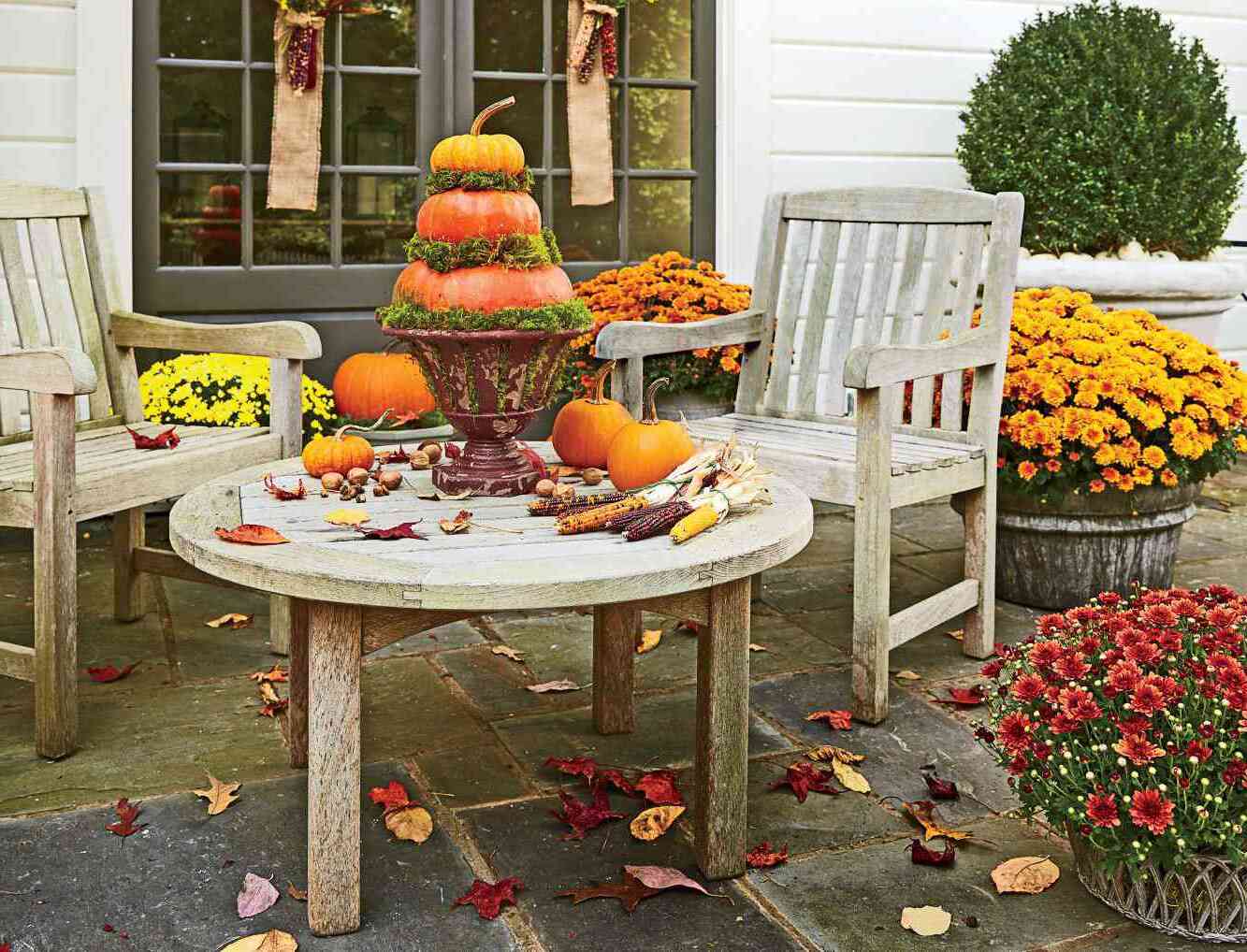
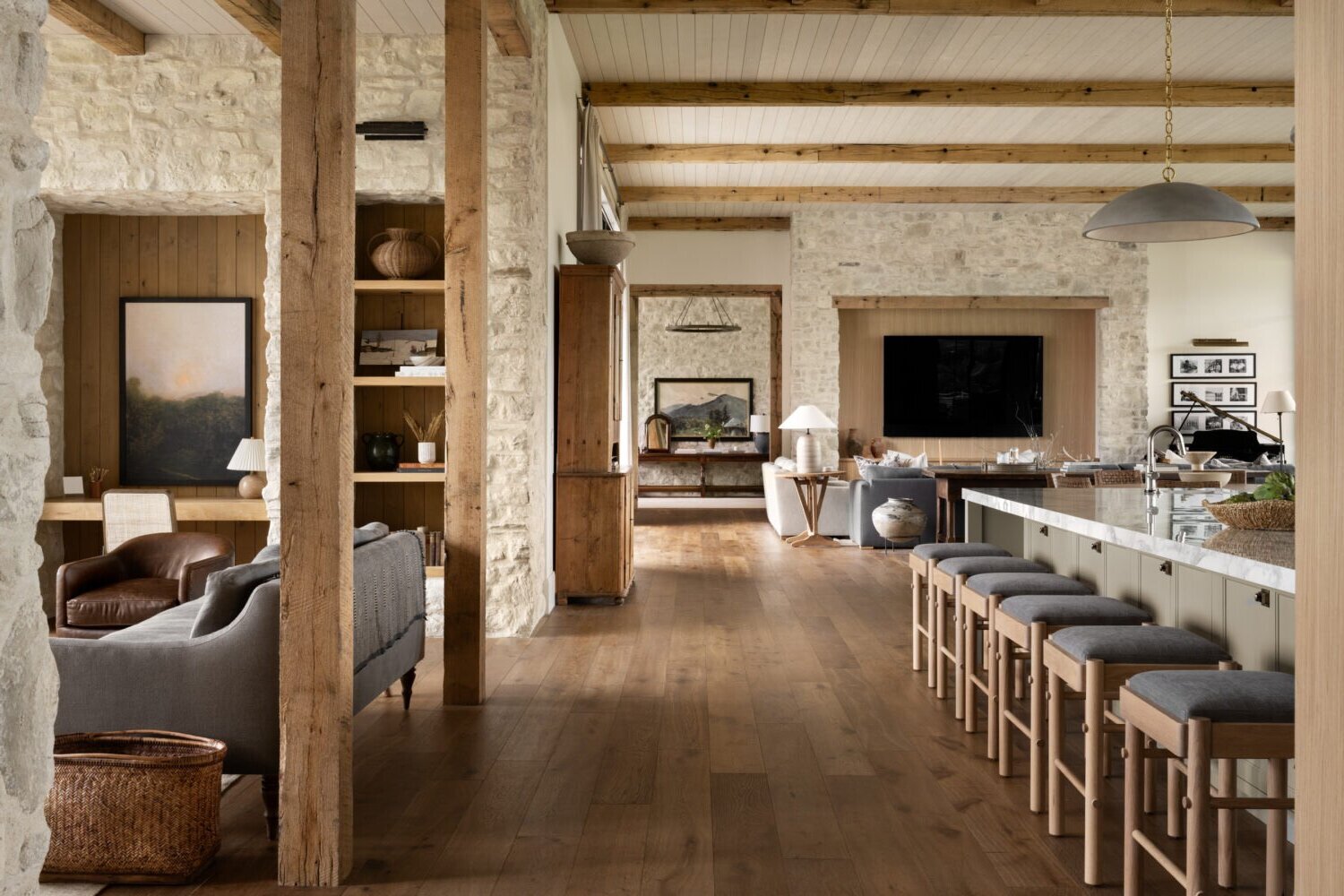
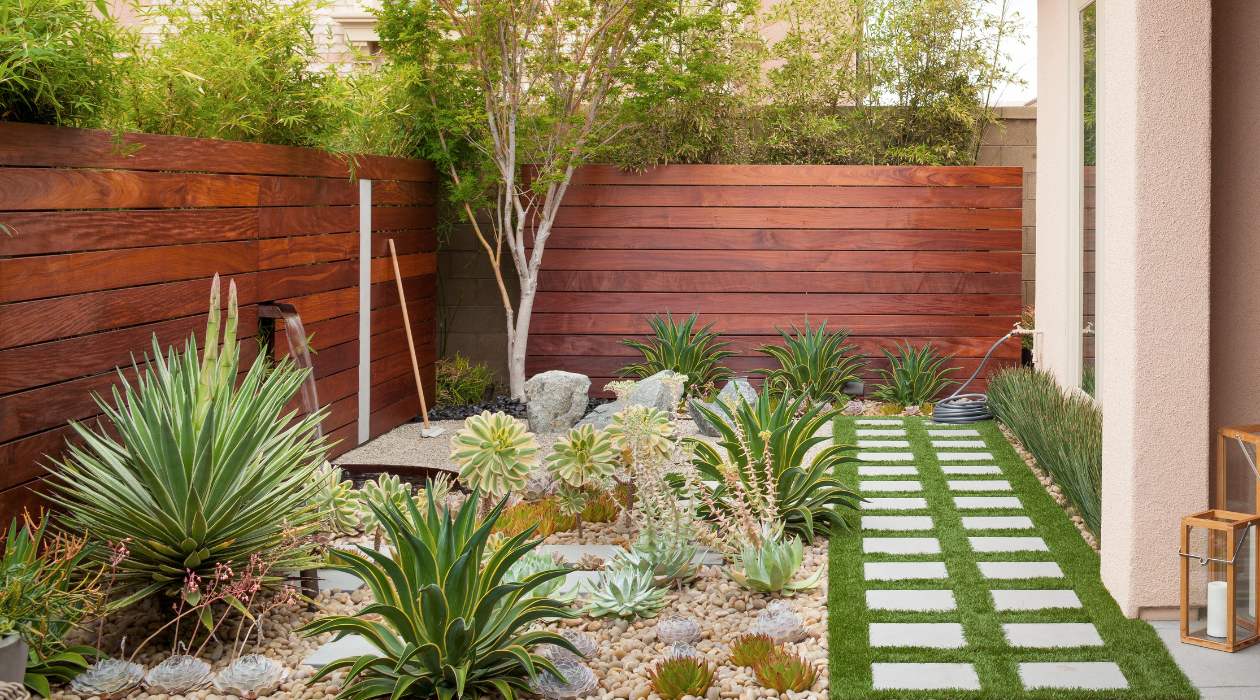
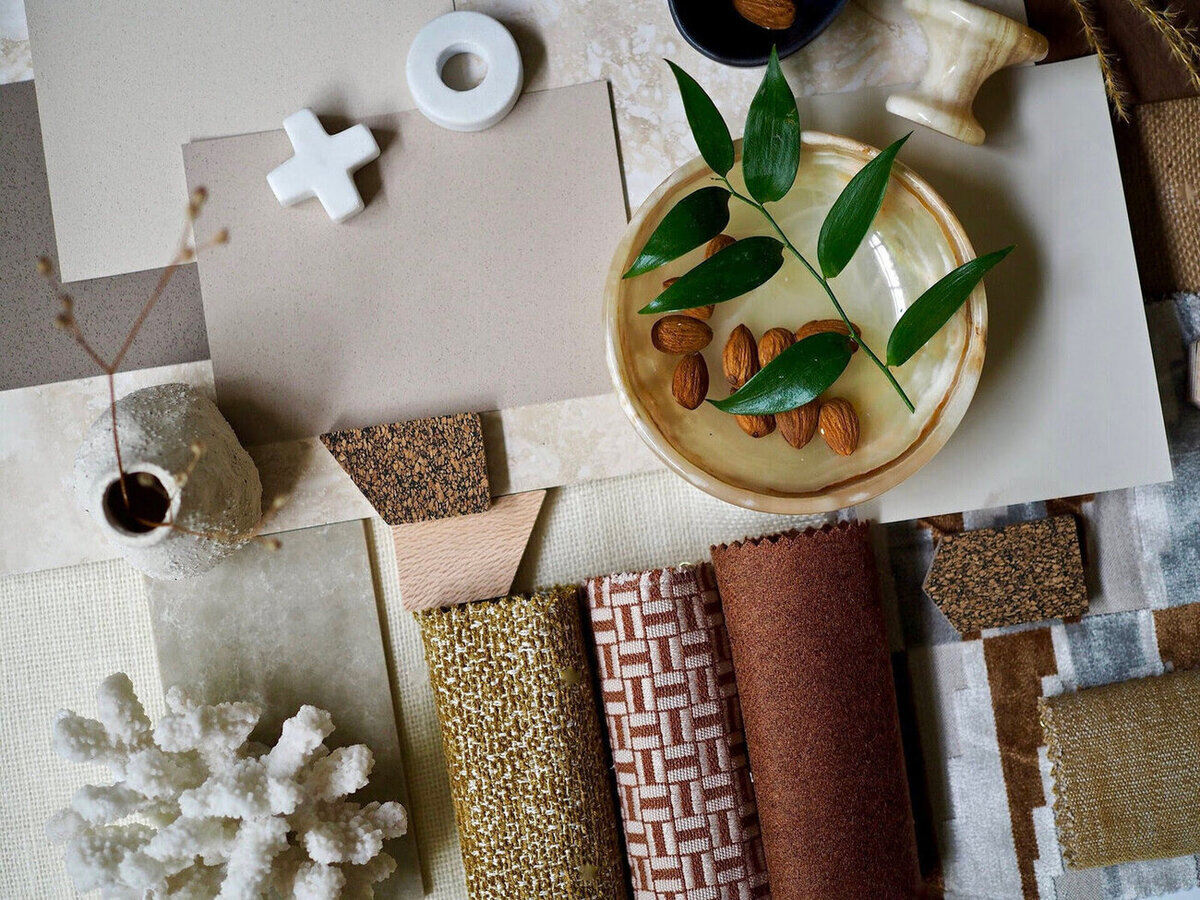
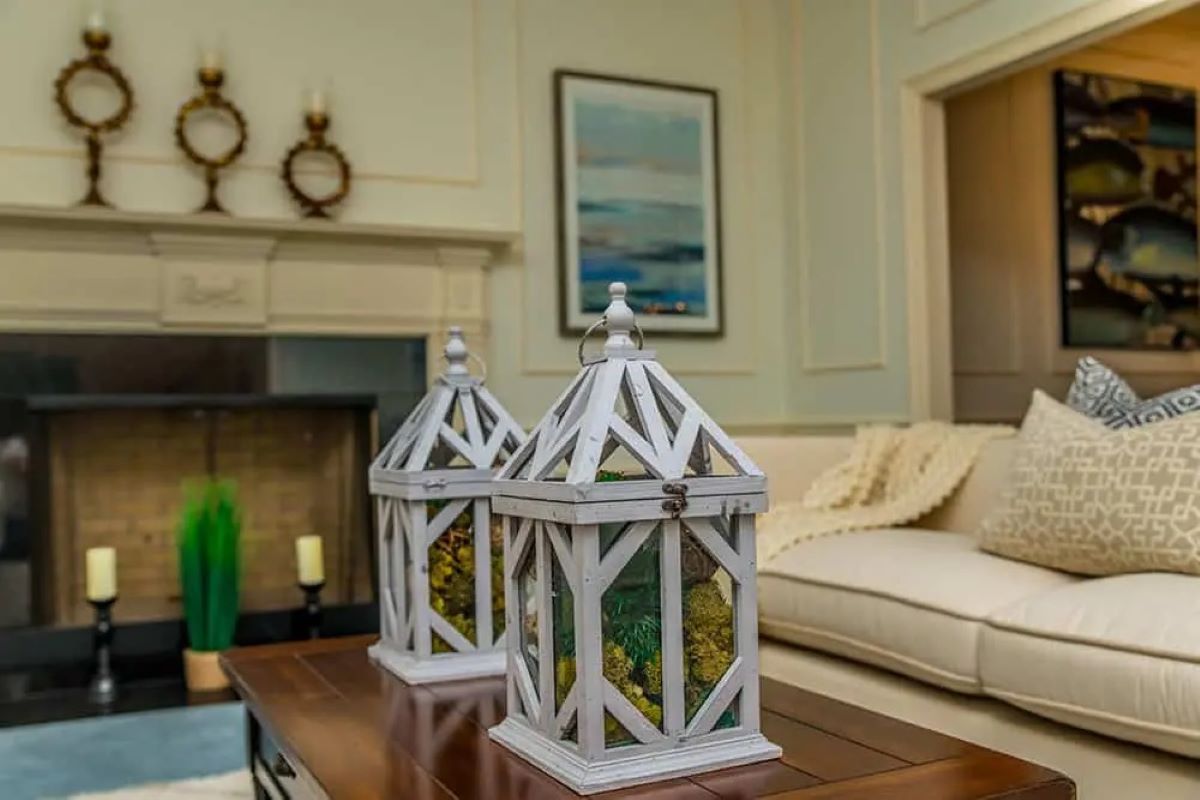
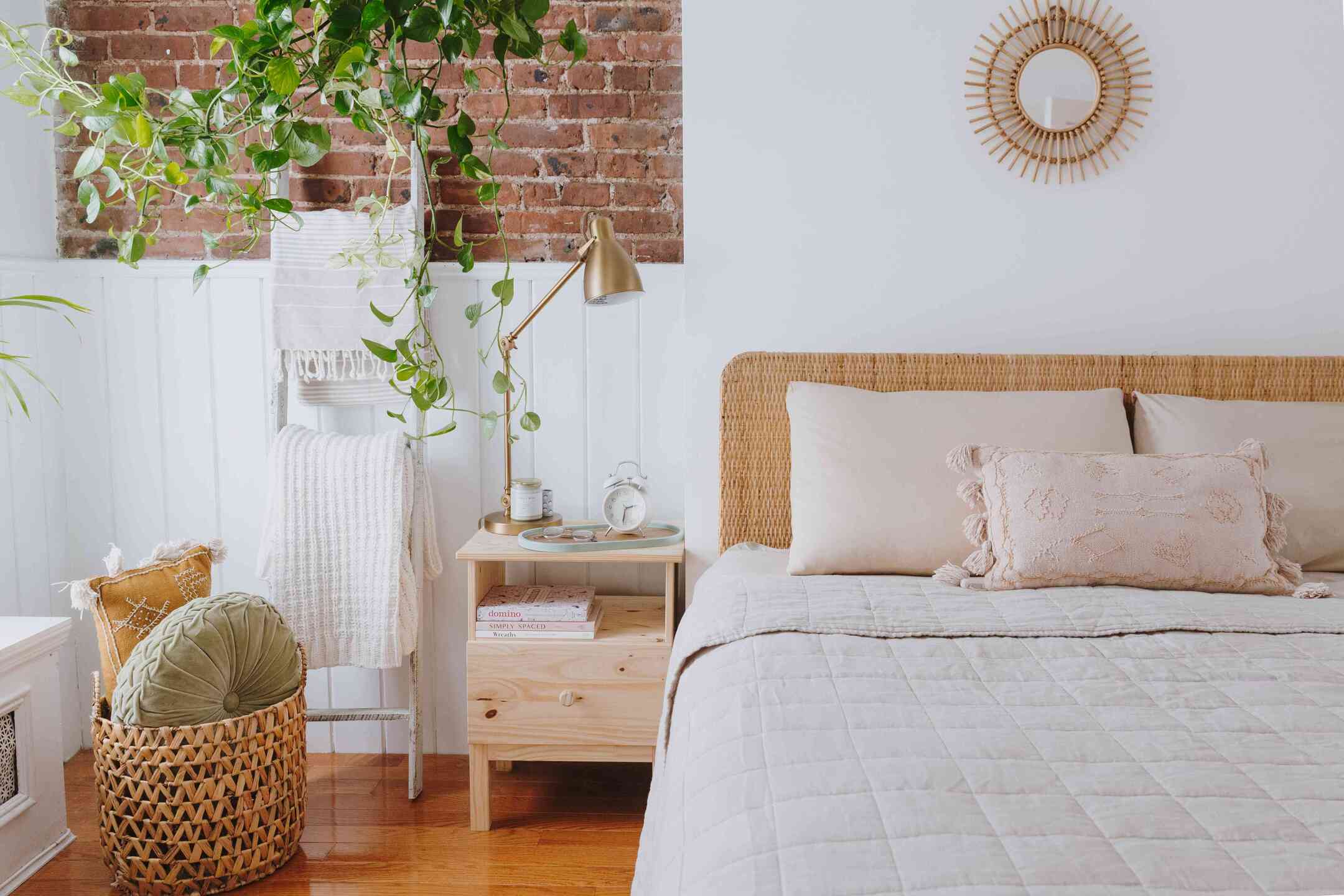
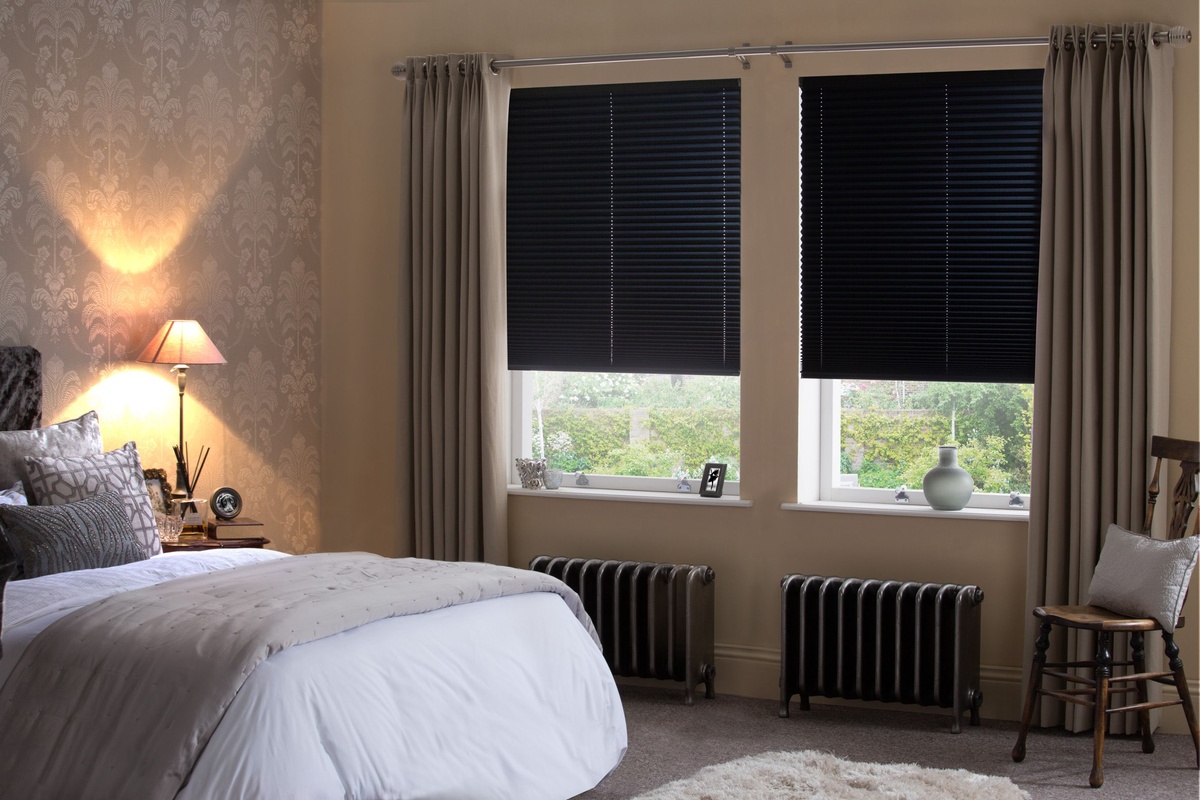
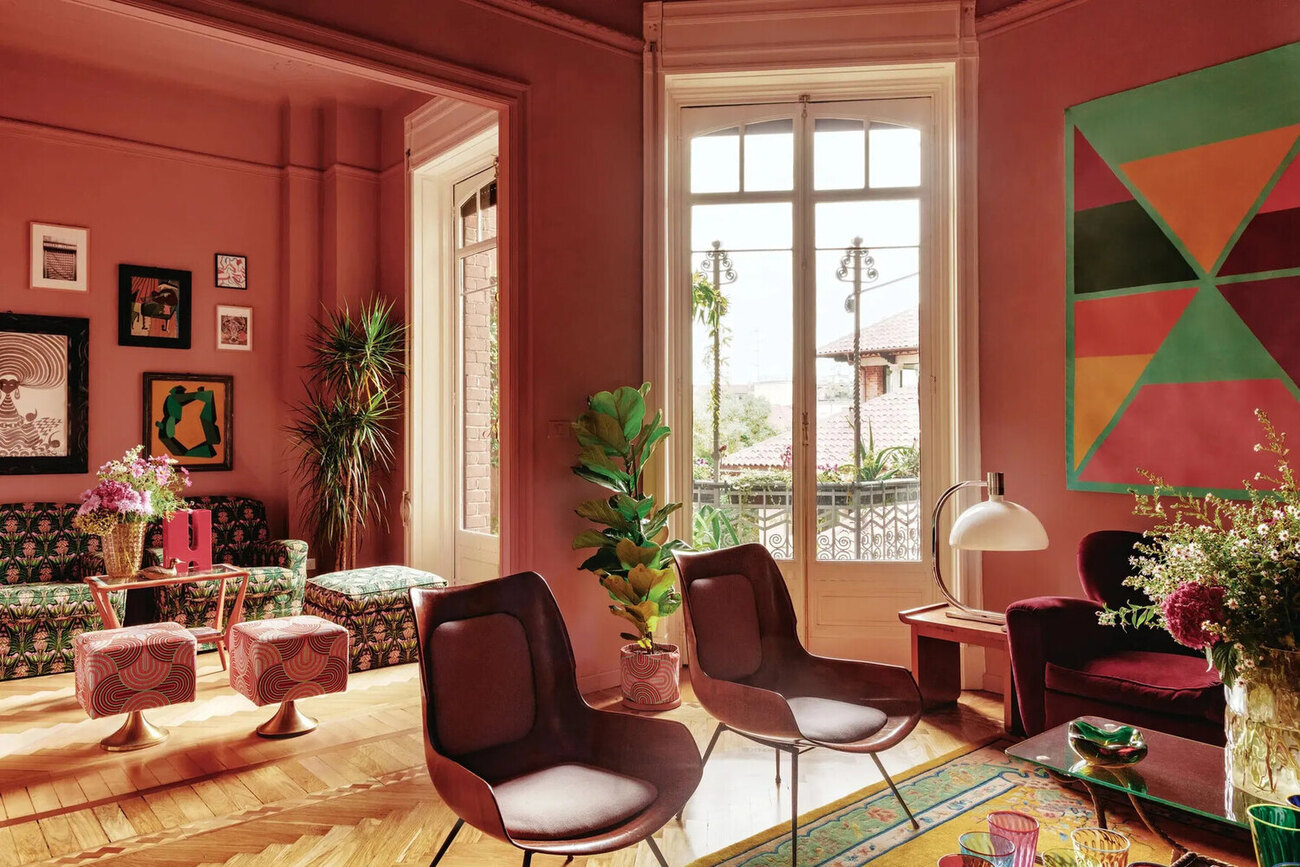


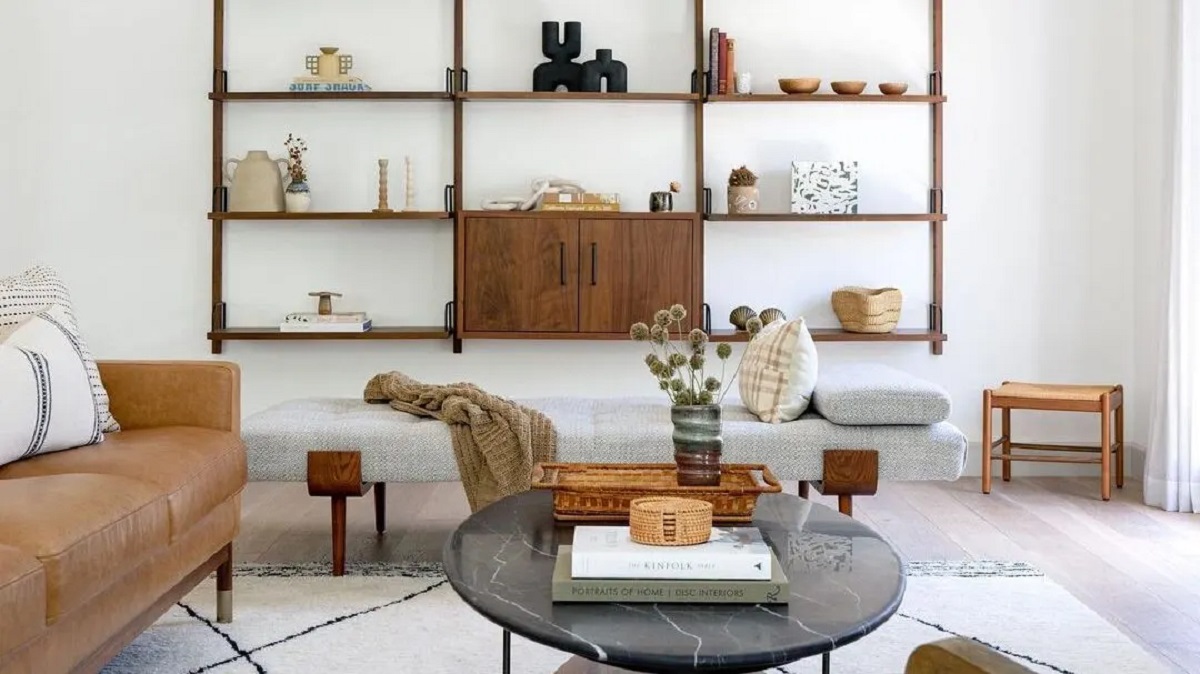
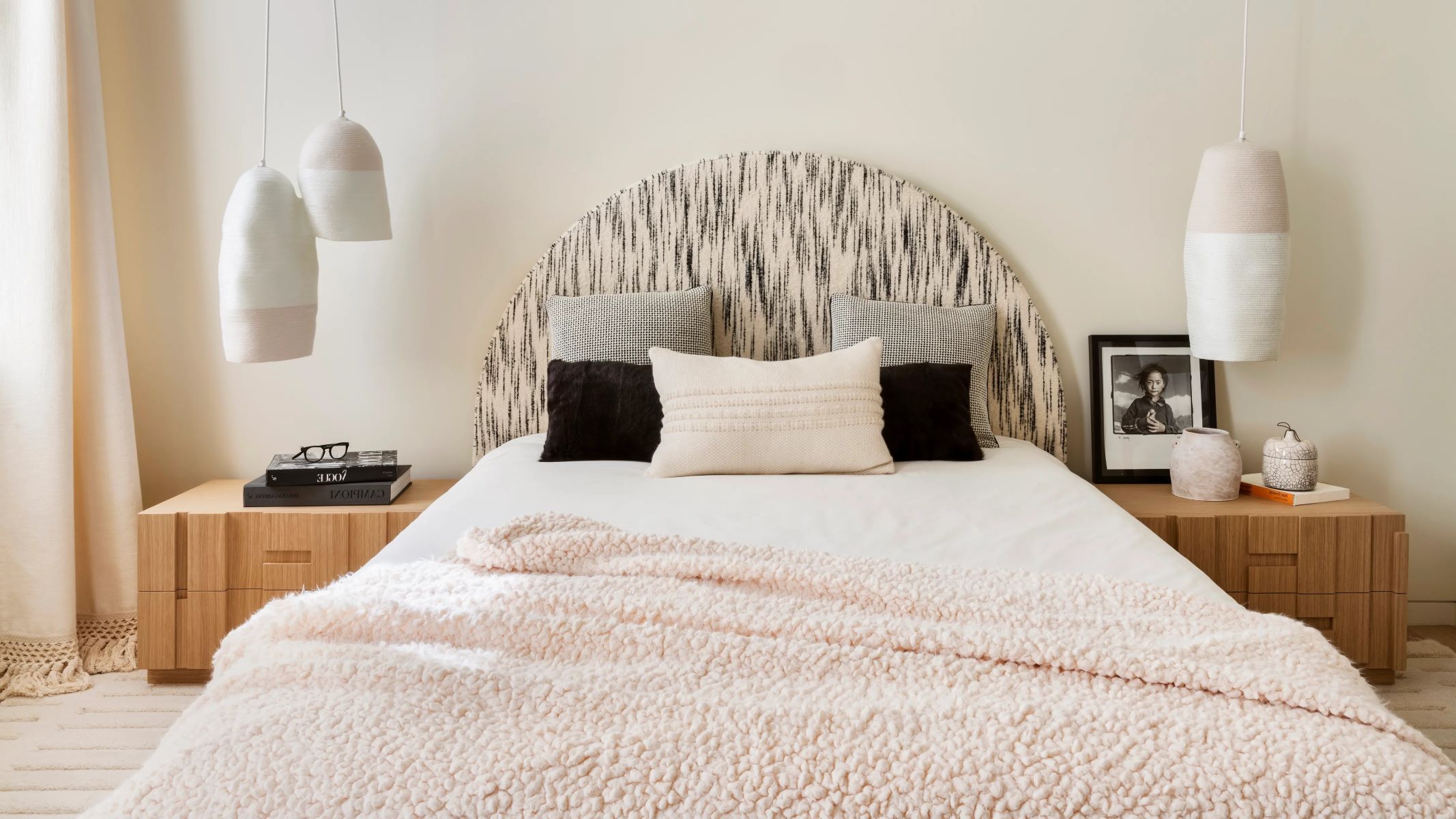

0 thoughts on “Front Yard Walkway Ideas: 15 Ways To Enhance Your Home”